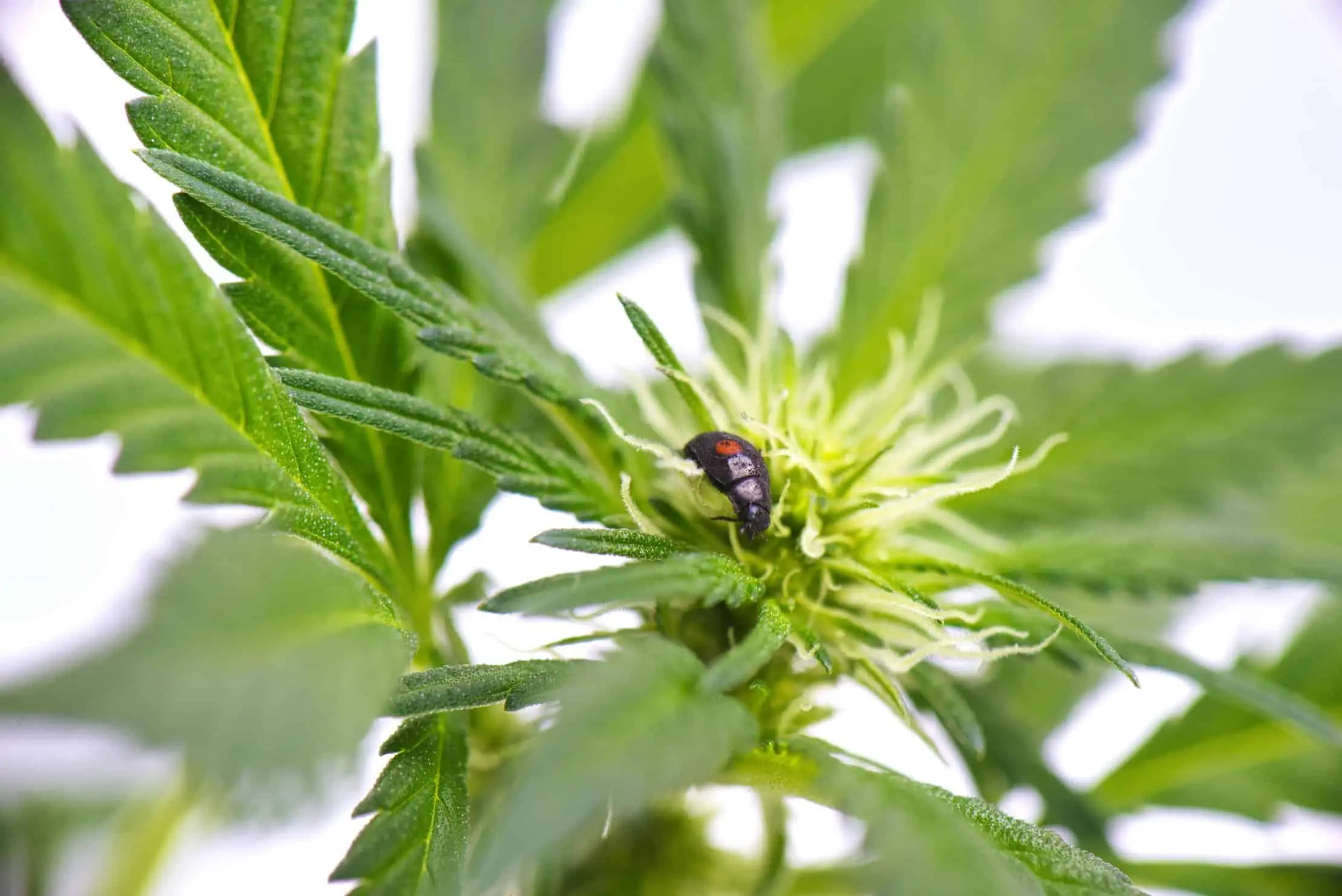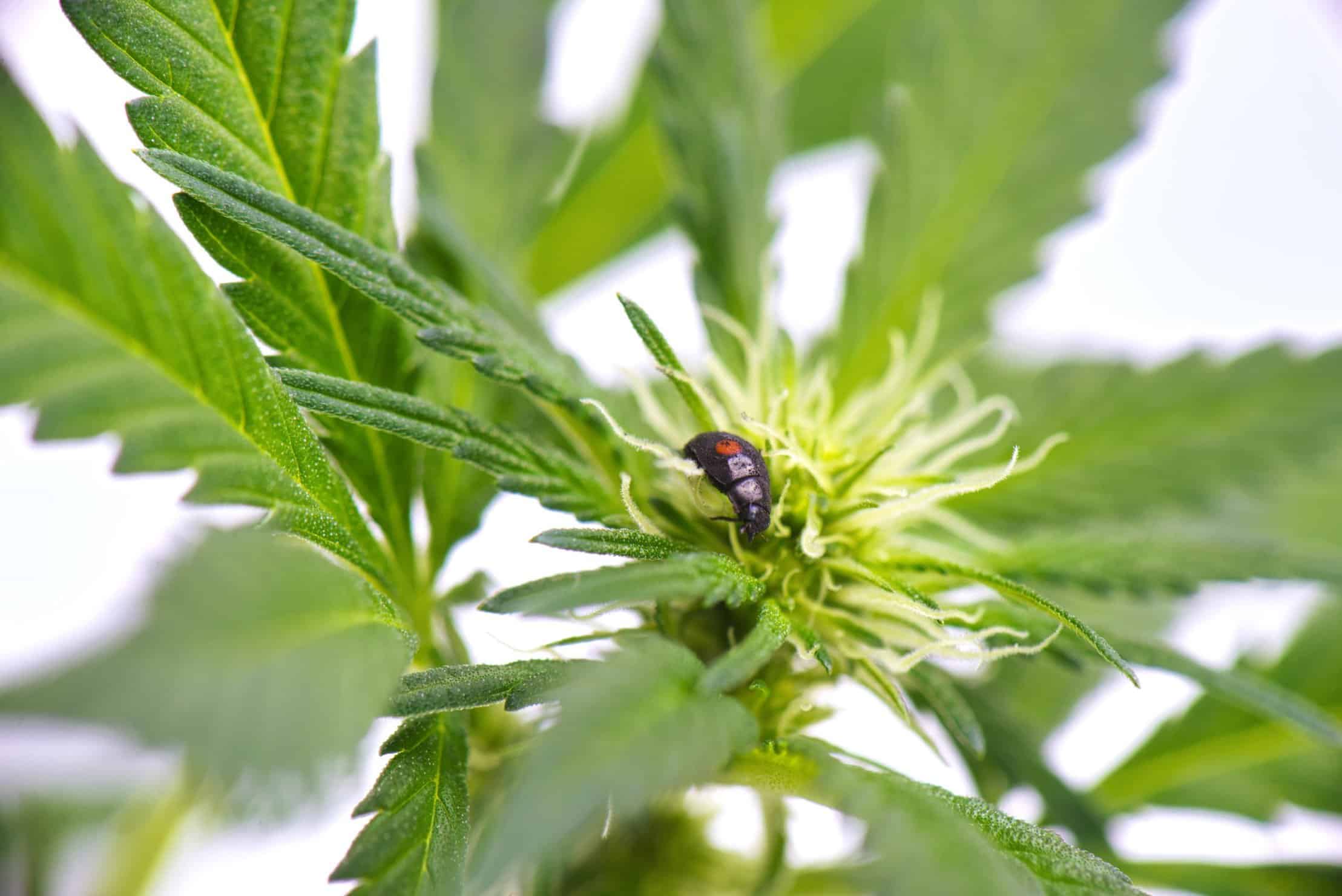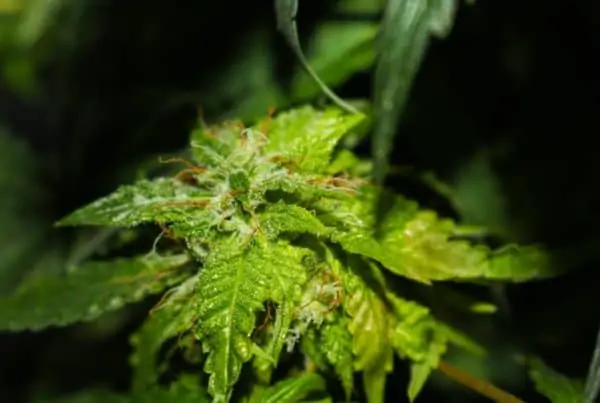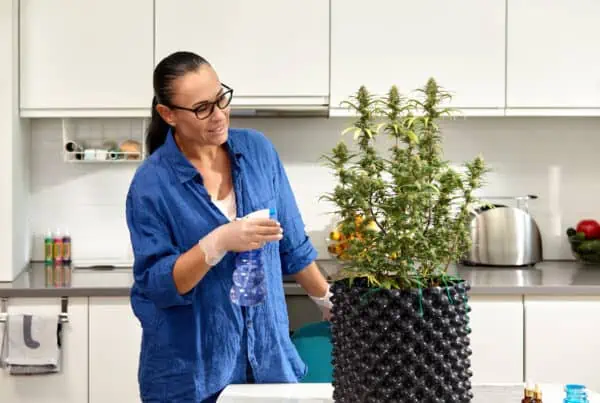TABLE OF CONTENTS
While growing cannabis isn't extremely difficult, it helps to know the common cannabis pest and disease issues that may occur.
Both indoor and outdoor grows can be impacted by a wide range of afflictions, whether they be insects, animals, molds, or fungi.
Your responsibility as a cultivator is to recognize the telltale signs of their presence and act quickly to keep damage to a minimum.
Indoor cultivation projects take place in an entirely controlled environment, so although the risk of pests may not be as large as in an outdoor grow, the possibility of developing problems is still a concern and something to monitor.
With proper humidity, air circulation, temperature, and a clean environment, your pest risks are usually minimal.
Prevention Is the Best Medicine for Common Cannabis Pest and Disease Issues
Of course, the best way to minimize the risk of crop damage that pests cause is to prevent them from getting established in your grow. Once you have certain pests, they can be very difficult to eradicate and may be an irritation and a potential danger to your crops for years to come.
Even with cultivation best practices and due diligence to keep pests and diseases absent or in check, problems can still occur.
Some problems are relatively minor and of little consequence, while others can profoundly impact your cannabis grow and do serious damage.
Let’s examine the most common cannabis pest and disease issues you may encounter—as well as ways to address them and their impact.
1. Spider Mites
Spider mites are among the most common pests to threaten your grow and unfortunately, they can be very difficult to eradicate and are a huge nuisance. Spider mites are extremely small in size and are usually found on the bottoms of leaves. These mites will bite the plant leaves to suck out the nutrients.
The bites to the leaves usually appear as pale specks on the leaves. These pests are particularly common in soil grows, and they reproduce rapidly, becoming established quickly. Since they are so tiny, they hide in small areas, emerging to severely damage.
Even after you treat for them and believe you’ve eradicated them, they often reappear. Spider mites can be one of the most damaging and frustrating pests to eliminate from your grow room.
To effectively treat a spider mite infestation, it’s important to detect them early. Inspect your plants’ leaves, especially the undersides, on a regular basis.
Maintain good air circulation in your grow room. Not only do the plants benefits from it, but spider mites don’t like the breeze. Spraying the plants thoroughly with any of a variety of products like Azamax or Mighty Wash will go a long way toward exterminating spider mites or keeping them in check.
After spraying your plants shortly before the lights turn off, keep fans circulating air in the room. Some growers have luck eradicating spider mites by using Neem Oil following treatment with the products mentioned above.
If all else fails, you can use Floramite, which is extremely potent and harsh. Follow the directions closely when using this product and only use it if absolutely necessary.
Because spider mites can be such persistent and insidious pests that have the ability to ruin a good crop, you would be wise to treat the grow room between grows, spraying down the room a few times, weeks apart to ensure you have killed all remaining mites that may linger.
2. Aphids

Less common than spider mites but still a problem for cannabis growers, aphids can seriously impact your cannabis grow. Aphids are more common with outdoor grows than indoors, and they can quickly become established in your grow.
They reproduce rapidly, so detecting them early is important. Like spider mites, aphids will bite your plants and suck the juices. They are larger than spider mites, so detecting them is much easier. Closely examine the undersides of stems and leaves to see if aphids are present.
One way to treat for aphids is to spray the plant with a mild water and dish soap solution.
Insecticidal soaps will also help eliminate them or keep their population small. Repeat treatment will most likely be necessary.
Neem oil is another way to treat for aphids. Spinosad products are organic and safe for humans and animals alike, and can work well for killing aphids on contact. Spray liberally and repeat as necessary.
For outdoor and greenhouse grows, natural aphid warfare is possible with ladybugs that will prey on them and help keep their populations in check. If your aphid problem isn’t terribly large, ladybugs provide a natural and safe way to minimize their impact on your cannabis plants.
Although they may not be as persistent and insidious as spider mites, aphids can seriously impact your crop. A keen eye for their presence and persistence in treating them will go a long way toward keeping their numbers low and their impact minimal.
3. Leaf Hoppers and Caterpillars
If you grow outdoors, sooner or later you’ll notice leaf hoppers or caterpillars on your plants. Leaf hoppers are small, agile insects that move across leaves quickly, often darting beneath the leaves. They are brightly colored and common, and in limited numbers will not impact your grow.
Caterpillars are usually found in limited numbers as well, but they can cause more serious damage. Several caterpillars can cause extensive damage to both leaves and buds and must be eliminated as soon as possible.
Few things are more annoying to a grower than to see a prize cola bud demolished by a hungry caterpillar. The damage they can do is surprisingly severe.
Remove caterpillars manually if you see them. You can also kill them with Monterey B.t. This product is a safe biological insecticide. If you detect caterpillar damage in your grow, do not hesitate to use it.
4. Mold
Mold is a fairly common problem with cannabis plants, especially indoors or in a greenhouse setting, where humidity levels can get high and air circulation is low. Mold is devastating but more easily prevented than aphids or spider mites.
Mold will kill plants and ruin flowers, so its impact on a grow can be severe. Unfortunately, it often reveals itself well into the flower stage, when small, yellow leaves appear. The yellow leaves are a sign that mold is occurring at their base, within the interior nooks and crannies of the flowers where moisture can hide and get a foothold.
Left unchecked, mold will quickly destroy the entire bud and spread to other areas of the plant. If you detect mold—often found on the biggest, densest, and best buds—clip the bud from the plant immediately and remove it from the grow.
Mold often results from lapses in sound cultivation practices in the grow. Be sure to monitor temperature and humidity, keeping temperature above 68 degrees Fahrenheit and humidity at 40-50 percent when in flower.
Air circulation is critical while plants are flowering. Oscillating fans or a few mounted, stationary fans will provide good air flow throughout the room.
If necessary, install forced-air ventilation in the grow room to remove stagnant, humid air on a steady basis. If you’re growing strains with excessive amounts of leaves, remove any leaves that are touching bud sites.
If you continue to struggle with mold, look for mold-resistant strains to grow. Certain strains are more resistant to mold than others. Do a little research and invest in one or more of these strains.
5. White Powdery Mildew
White powdery mildew is a very common problem with cannabis. Like mold, it usually results from lapses in good cultivation protocol and practices. The telltale signs of this affliction are the appearance of white patches on the leaves that look like someone dusted the plants with flour.
White powdery mildew is a fungal disease that is common with cannabis and a wide range of other plants. It can spread rapidly and destroy plants if left unchecked. If detected and treated early, however, you can eliminate white powdery mildew from your grow and salvage your harvest.
“
There are over 300,000 jobs in the cannabis industry. CTU trained me for one of them!

Makes $24.50 @ THC +
A number of home remedies for white powdery mildew work quite well. However, the most effective method is to wipe the mildew from the leaves with tap water on wetted paper towels or hand cloths.
Then, dry the leaves and run an oscillating fan or two stationary fans in the room, and ensure the room has proper ventilation (a lack of ventilation and air circulation is most likely the original cause of the problem).
Don't Lose Your Harvest – Fight Back
This list of pests and diseases include the most common ones you will encounter when growing cannabis. Impact from indoor pests and diseases is often the result of improper plant care. You can minimize or eliminate risks of problems from them by changing your practices.
Learning about cannabis pests and diseases—and how to recognize them—is vital so you can address them if they occur in your garden.
Gain a solid knowledge of cannabis cultivation best practices so you can keep the damage from these threats to a minimum by enrolling in Cannabis Training University's online marijuana certifications.

Luis Cordova
Luis Cordova is a distinguished author, and renowned expert in cannabis cultivation, who possesses a Master's degree in Plant Biotechnology and Pharmaceutical Science. As a valued contributor to highly esteemed publications such as Cannabis Training University and Maximum Yield Magazine, Luis has emerged as a trusted source of guidance and knowledge in the cannabis industry. Having written thousands of informative articles, Luis is widely recognized for his comprehensive expertise on cultivating cannabis, both indoors and outdoors.












 Jeff was involved in an accident where he endured a traumatic brain injury. He had a week-long stay in ICU where brain surgeons
Jeff was involved in an accident where he endured a traumatic brain injury. He had a week-long stay in ICU where brain surgeons  100% risk free money back guarantee within 48 hours after purchase if student has not completed any of the courses or exams.
100% risk free money back guarantee within 48 hours after purchase if student has not completed any of the courses or exams.